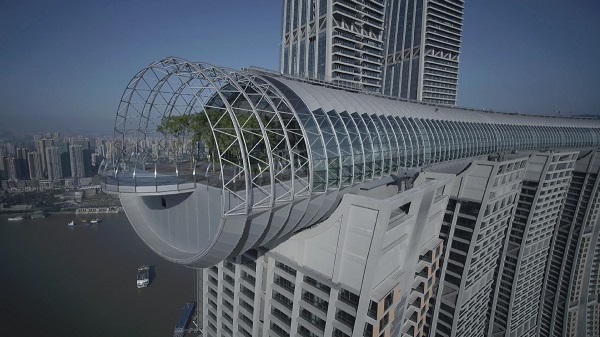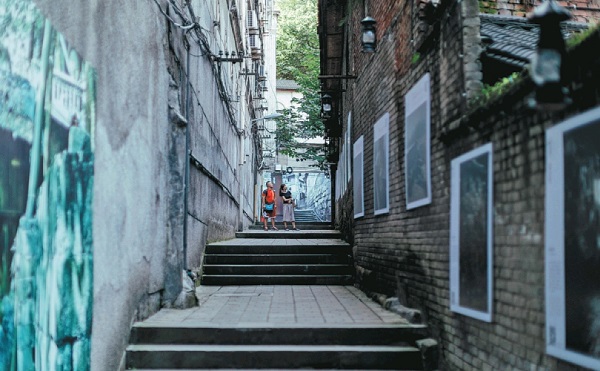Chongqing weaves magic
Tan Yingzi in Chongqing
Updated:2020-06-28
China Daily
 |
|
The Crystal, with its continuous steel structure, is the first horizontal skyscraper in China. [Photo provided to China Daily] |
First horizontal skyscraper
A giant landmark that looks like a spaceship recently stood up at Chaotianmen Port, where the Yangtze and Jialing rivers meet.
Inspired by traditional Chinese sailing vessels and dubbed an engineering marvel, Raffles City Chongqing is designed by world-renowned architect Moshe Safdie and boasts a sky bridge, called The Crystal, which is said to be one of the the world's highest such bridges.
Measuring 300 meters in length, the bridge houses the Exploration Deck, a viewing gallery accessible to the public, and The Private Club, a members-only clubhouse which operates the "highest infinity swimming pool in the world".
The Crystal was officially opened to the public on May 30. It is the first horizontal skyscraper in China, drawing a lot of attention at home and abroad for its difficulty of construction and engineering.
It represents a milestone in Chinese architectural history, with its use of advanced synchronous hydraulic lifting technology to hoist it into place and attach it to four 250-meter-tall towers.
The Crystal's continuous steel structure weighing 12,000 tons is equivalent to the total weight of France's Eiffel Tower, according to developer Capita-Land Group.
At the entrance to the Exploration Deck, there is a small history gallery providing interesting information of the river city and the construction of the architecture.
Most of the materials are exhibited to the public for the first time, including a book written by a foreign doctor teaching foreigners how to speak the local dialect.
Tourists can then take a high-speed elevator which will transport them to the sky bridge in 50 seconds.
Standing on the glass deck facing Chaotianmen Port, you can enjoy a beautiful view of the two rivers, the skyscrapers, the opera house and the Nanshan Mountain.
As the day gets dark, the night view of the city is unparalleled to anywhere else in China.
 |
|
Walking trail is a sightseeing route that lets visitors experience the real life and history of Chongqing. [Photo by Xie Hao/China Daily] |
Oldest walking trails
In Chongqing, walking was the main way that most residents got around. Since ancient times, numerous walking trails or small roads that wind their way around the mountains have helped connect communities and lives.
Nowadays, some of them have been preserved and transformed into sightseeing routes to let visitors experience the landscape, real life and history of the city.
The history of Chongqing dates back 3,000 years. The city first took shape on the hilly Yuzhong Peninsula, which became the center of the local economy.
Mountain City No 3 Walking Trail at the peninsular is the best example. The 3.9-kilometer long trail starts at Zhongxing Road by the Shibanpo Yangtze River Bridge, stretches along the ancient city walls, and ends at Tongyuan Gate, one of the remaining two city gates from Song Dynasty (960-1279) and the only gate still in use.
Entry is free and visitors can get access to the trails from several entrances amid the old alleys. It is not easy to find the hidden entrances, but the warmhearted local people will happily provide directions.
Along the road overlooking the Yangtze River, you can visit several historical sites, pass by the houses of local residents and stop for a cup of tea at some quaint tea house or cafe.
Video

John Edwards, the UK trade commissioner for China, praised Chongqing over its rise as a burgeoning center in intelligent manufacturing.





